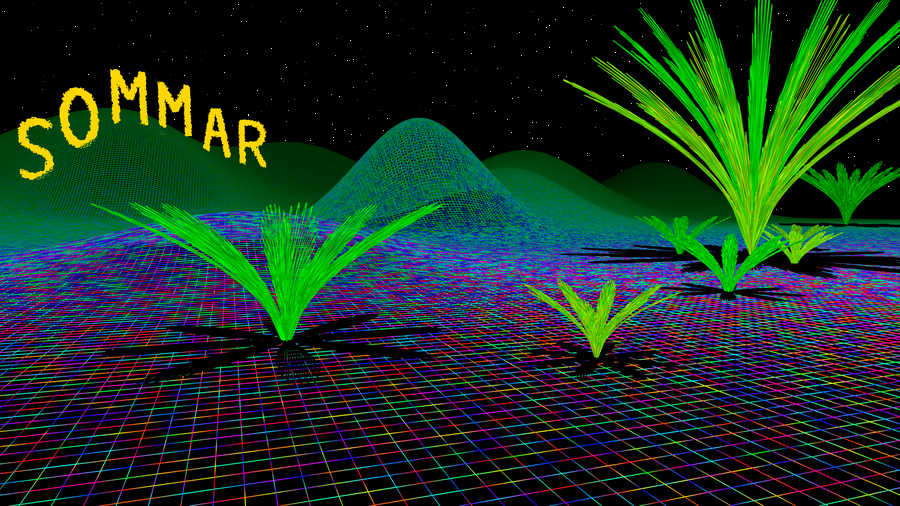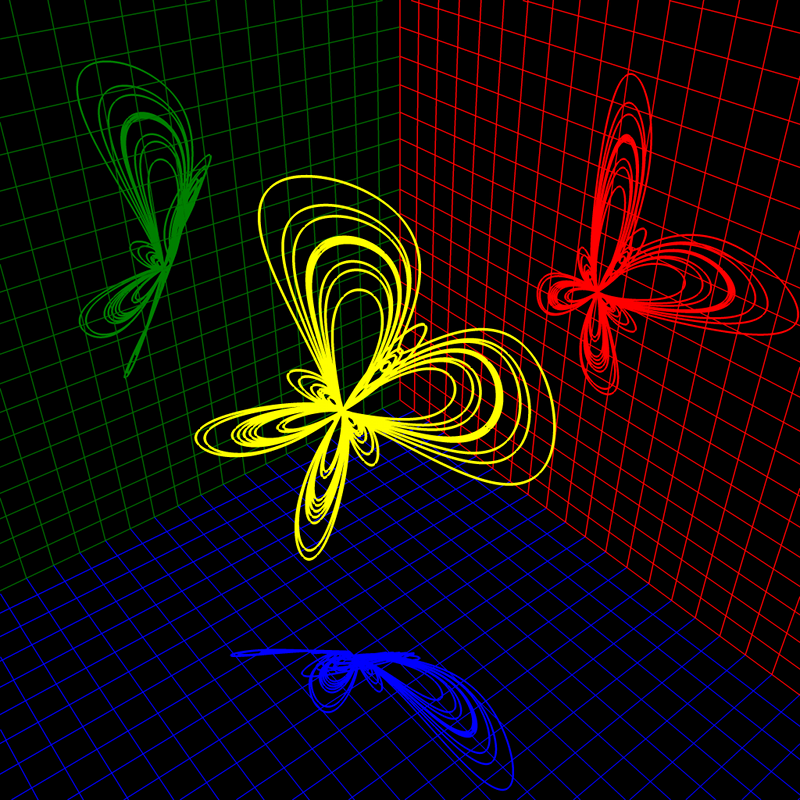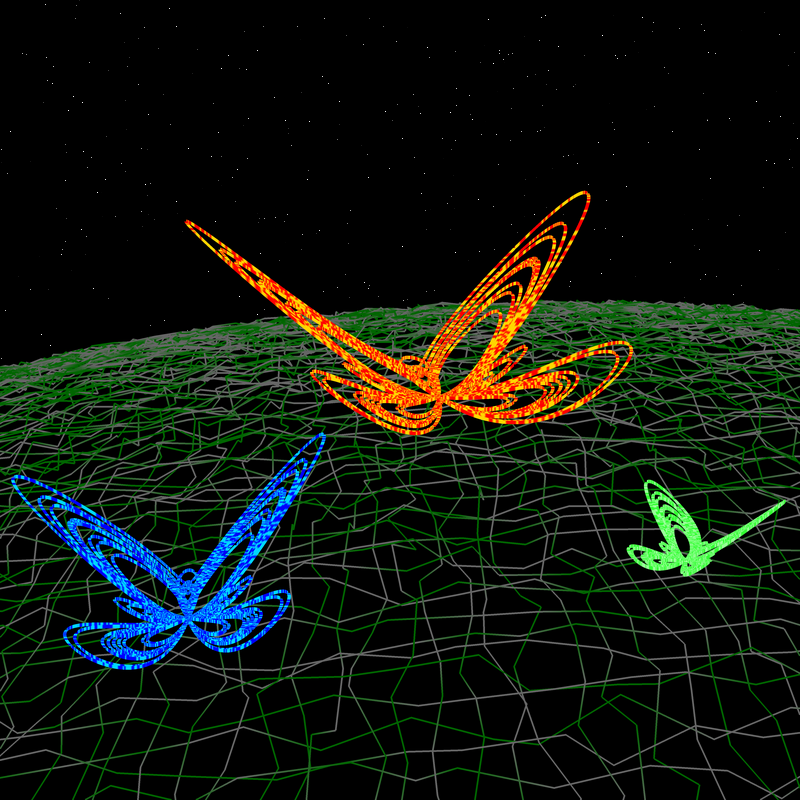Mathematical scenes
- Plants
- Animals
- Culture
- Portraits
-
Mathematical images
- Scenes
- DLA fractals
- Hénon’s area-preserving map
- The Lorenz attractor
- IFS fractals
- Game of Life
- Life-like cellular automata
- Ashes of Life-like cellular automata
- Carpets from Life-like cellular automata
- Mazes from Life-like cellular automata
- Cyclic cellular automata
- Miscellaneous cellular automata
- The averaging N-state extended-range cellular automaton
- Coloured extended-range cellular automata
- Reflection in curved surfaces
Click a thumbnail image to view the original-size image.
A cool summer night
The image is created by a simple program in my mathematical software AlgoSim. The hills are Gaussian and the plants are based on the planar curve ρ = |sin 100φ| cos2 4φ drawn on the surface of revolution obtained from the square root function.
Shadows of a butterfly
The image is created by a simple program in my mathematical software AlgoSim. The butterfly is a butterfly curve drawn on a hyperbolic cylinder and then rotated using a product of simple rotation matrices. The obvious projections are used to orthogonally project the butterfly on the three coordinate planes.
Butterflies at night
The image is created by a simple program in my mathematical software AlgoSim. Each butterfly is a butterfly curve drawn on a hyperbolic cylinder (in the parameter plane). The three butterflies are scaled and rotated individually using scaled products of simple rotation matrices. The celestial body is made of the parameter curves of a sphere in which each node has been randomly translated. The celestial body and the butterflies are all randomly coloured using two colours per object. The stars in the background are randomly chosen points on a (large) sphere. A particular parameterisation of the sphere has to be used in order to obtain a uniform distribution of stars.
All images are generated by Andreas Rejbrand.



